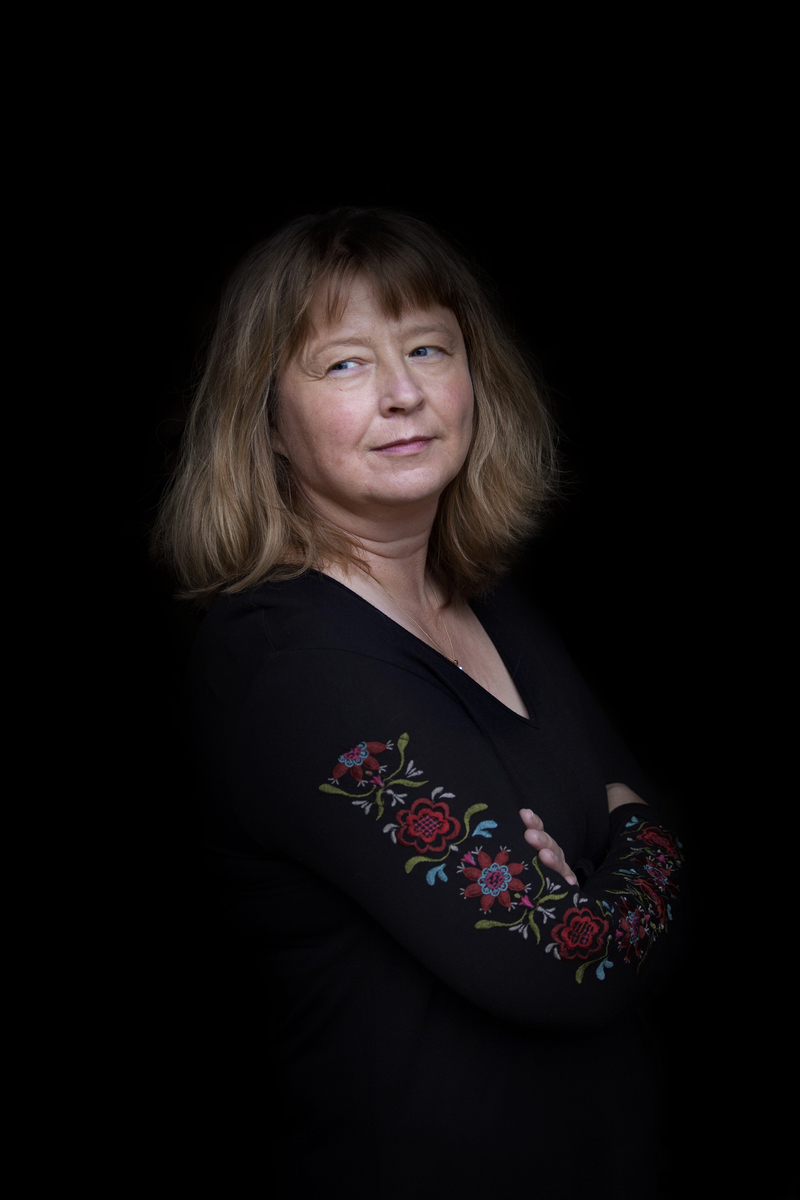Carina Karlsson

Portraying evil is one of the greatest of literary challenges. How can one describe humanity’s dark side without overwhelming the reader with pessimism? Is it so that the text should offer a smidgen of hope to make it bearable?
Author Carina Karlsson circles around these existential questions in her novel Algot, nominated by the autonomous territory of Åland for the Nordic Council Literature Prize 2018. Karlsson is no stranger to the Nordic Council Literature Prize, as her novel Mirakelvattnet (2015) was nominated in 2016. Earlier in her career Karlsson described herself as a poet with a sure sense of style. Her body of work, now consisting of more than ten titles, has been awarded the Harry Martinson memorial grant, Klockrikestipendiet.
Karlsson looks faithfully to her hometown for motivation. She looks back at dramatic historical events, emphasising over and again the vulnerability of the individual. This time it’s the turmoil of the eighteenth century when Åland is occupied repeatedly by Russian forces. Åland’s inhabitants flee across the water, seeking refuge in the relative safety of Sweden – a situation that bears an obvious resemblance to the current refugee situation. When they return, the entire community must be rebuilt.
Algot Holm is a young boatman, swept by the winds of the fate from his home in Karlskrona to the islands of Åland, where he’s been allocated a dilapidated croft near Kastelholm Castle in Sund. His predecessor went missing during the war, so he takes on not only the house but also the wife, Ilja, and her little daughter, Greta. Their lives are hard – a ruthless struggle to keep poverty at bay. Death walks at their side, their shadowy companion. Alcohol provides an escape but soon turns into a dependence that typifies day-to-day life. With curious precision, Karlsson describes how Ilja sinks deeper into alcoholism while vainly attempting to retain some vestige of dignity.
Algot is consumed by hatred and sheer madness. With two partners in crime, he commits a series of violent acts, culminating in the notorious murders of 1748 on Bänö, in the Föglö archipelago. Against a documentary background, Karlsson paints the picture of a bloody drama in which forgiveness and reconciliation are seldom seen.
The polar opposite of all this – a symbol of hope, if you will – is Greta. Her gaze of “shimmers and clouds” subdues even the darkest evil.
The language of Algot alternates between realistic and lyrical. The graphical sharpness of the tale’s structure reveals nature and mankind in indivisible symbiosis. The novel’s characters are dragged down by their living conditions, historical environments in the context of which we can recognise ourselves, beyond the boundaries of time and space.
It is a beautiful book, amidst all the sorrow and despair.